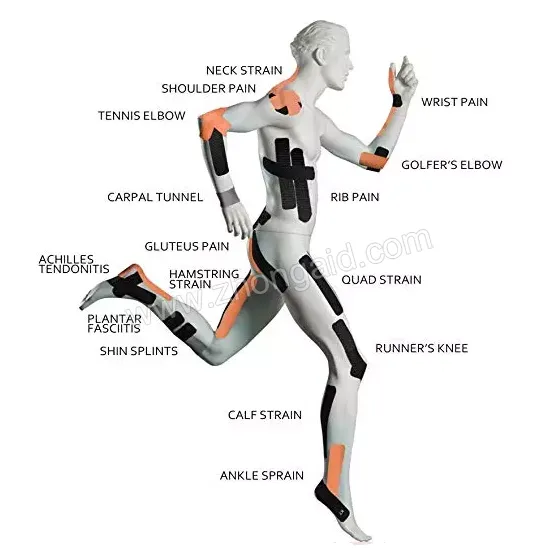Jan. 08, 2024
Apparel
In the world of sports and physical fitness, athletes often rely on specialized tapes to support their muscles and joints during intense activities. Two commonly used tapes in this regard are athletic tape and Kinesio tape. Despite serving similar purposes, these tapes exhibit notable differences in terms of functionality, advantages, disadvantages, and application techniques.
Functionality and Features: Athletic tape, also known as sports tape or rigid tape, is primarily designed to provide structural support to joints and muscles. It is made of rigid materials like cotton or a blend of cotton and synthetic fibers. The tape's primary function is to limit the range of motion and stabilize joints during physical activity, reducing the risk of injuries such as sprains or strains.
Pros:
Stability: Athletic tape offers excellent stability, making it ideal for securing joints and preventing excessive movement.
Durability: Known for its robustness, athletic tape is durable and can withstand intense physical activities without losing its adhesive properties.
Cost-Effective: Compared to Kinesio tape, athletic tape is generally more budget-friendly.
Cons:
Limited Flexibility: The rigidity of athletic tape restricts natural joint movement, potentially affecting an athlete's performance.
Skin Irritation: Prolonged use of athletic tape can sometimes lead to skin irritation or discomfort due to its strong adhesive properties.

Kinesio Tape
Functionality and Features: Kinesio tape, on the other hand, is a more elastic and flexible tape designed to mimic the qualities of human skin. It is often used to facilitate the body's natural healing process by providing support without restricting movement. Kinesio tape is made of breathable materials like cotton and is stretchable both lengthwise and widthwise.
Pros:
Flexibility: Kinesio tape allows for a wider range of motion, making it suitable for dynamic activities and sports that require agility.
Enhanced Blood Circulation: The elastic nature of Kinesio tape promotes improved blood circulation and lymphatic drainage, aiding in the recovery process.
Reduced Muscle Fatigue: Athletes often appreciate Kinesio tape for its ability to reduce muscle fatigue and support endurance during prolonged activities.
Cons:
Less Stability: Compared to athletic tape, Kinesio tape provides less structural stability, which may not be sufficient for certain injuries requiring rigid support.
Shorter Lifespan: Kinesio tape may lose its adhesive strength more quickly than athletic tape, especially in high-friction areas or during activities that induce excessive sweating.
Key Differences
1. Stretchability:
Athletic tape is rigid and offers limited stretch.
Kinesio tape is elastic and provides a greater range of motion.
2. Application Techniques:
Athletic tape is applied with tension to restrict joint movement.
Kinesio tape is applied without tension to allow for flexible support.
3. Purpose:
Athletic tape primarily focuses on structural stability.
Kinesio tape emphasizes support without compromising movement.
In conclusion, the choice between athletic sport tape and Kinesio tape depends on the specific needs of the athlete and the nature of the physical activity. Athletes seeking rigid support may opt for athletic tape, while those prioritizing flexibility and dynamic movement may find Kinesio tape more suitable. Ultimately, understanding the nuanced differences between these tapes allows individuals to make informed decisions based on their unique requirements.
If you are interested in sending in a Guest Blogger Submission,welcome to write for us!
All Comments ( 0 )